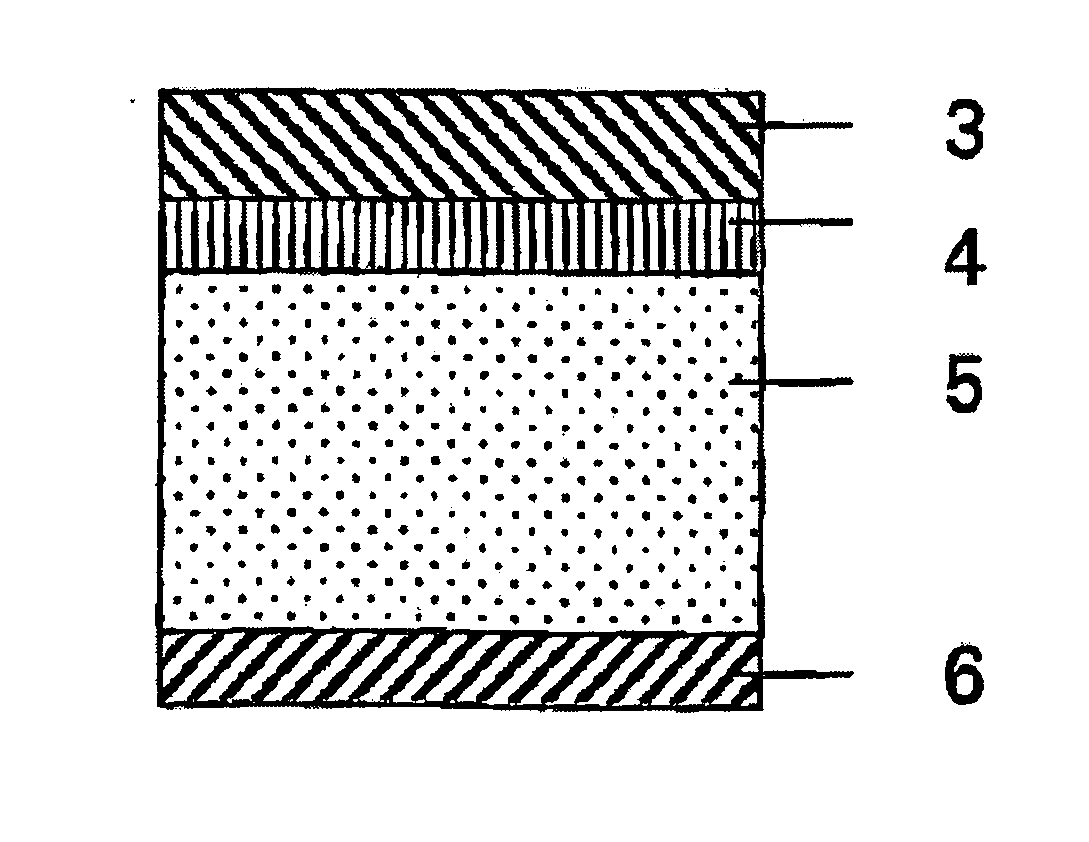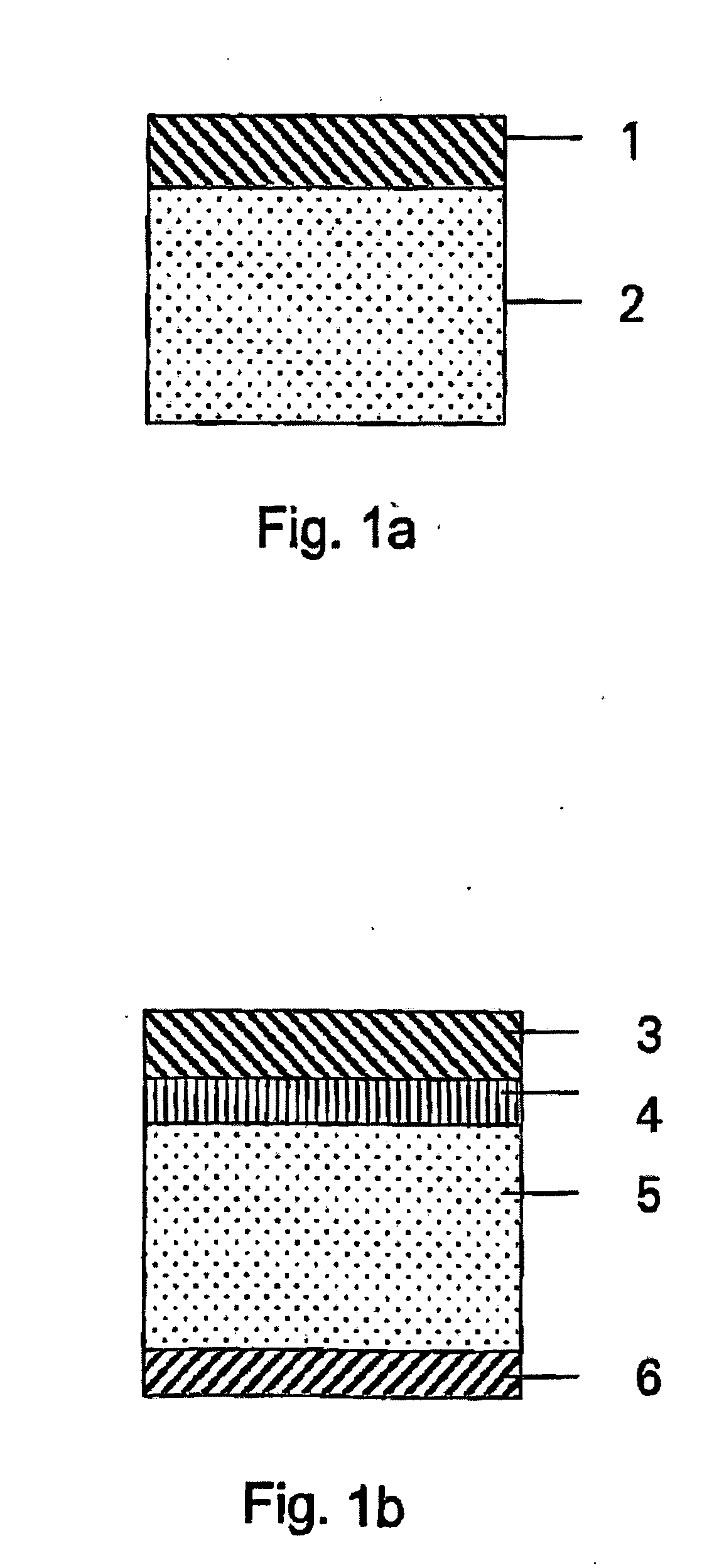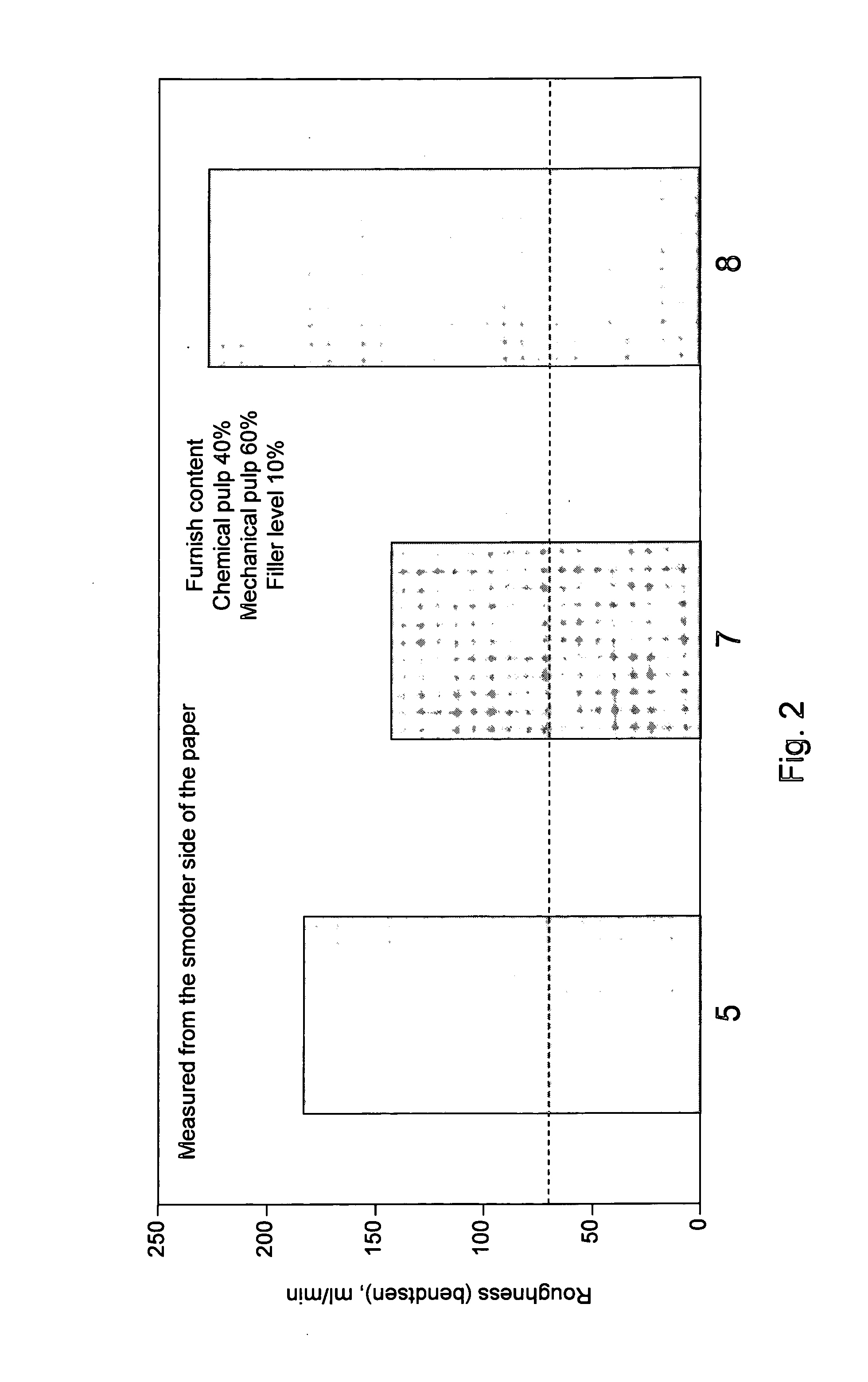Method for producing fiber product
a fiber product and fiber technology, applied in the field of fiber product production, can solve the problems of reduced formation, poor formation, and inability to run the paper machine, and achieve the effects of high formation level, good retention, and good retention
- Summary
- Abstract
- Description
- Claims
- Application Information
AI Technical Summary
Benefits of technology
Problems solved by technology
Method used
Image
Examples
example 1
Producing Layered Sheets with Multilayer Mould 1
[0066]In the test series, laboratory sheets were made with a special multilayer sheet mould.
[0067]With the multilayer mould it is possible to layer pulp with different pulp, filling and chemical characteristics into three different pulp layers. After the sheet has been produced, it is wet pressed and dried at standard conditions.
[0068]The grammages of the completed sheets were 36-37 g / m2 and the filler content in the sheets was 12-15%. The PCC content in the SuperFill was 67.5% and the carrier in the SuperFill was ECF bleached birch pulp (Äänekoski). The SuperFill product was made according to Example 1 of FI Patent Specification No. 100729.
[0069]The test point structures of the layered products are illustrated in Table 1.
TABLE 1Test PointsLayerratiosTest point 5Test point 733Cellulose / TMP accept / PCC / retCellulose / TMP accept / SF / ret33Cellulose / TMP rejectCellulose / TMP reject33Cellulose / TMP accept / PCC / retCellulose / TMP accept / SF / ret
[0070]Te...
example 2
Making Layered Sheets with a Multilayer Mould 2
[0081]In the test series, laboratory sheets were made with a special multilayer sheet mould.
[0082]With the multilayer mould it is possible to layer pulp with different grades of pulp, filler and chemicals into three different pulp layers. After the sheet has been produced, it is wet pressed and dried in standard circumstances.
[0083]The grammages of the completed sheets were 36-37 g / m2 and the filler content in the sheets was 12-15%. The PCC content in the SuperFill was 67.5% and the carrier material in the SuperFill was ECF bleached birch pulp (Äänekoski). The SuperFill product was made according to Example 1 of FI Patent Specification No. 100729.
[0084]The test point structures of the layered products are illustrated in Table 3.
TABLE 3Test pointsLayer ratiosTest point 10Test point 1130TMP accept / PCC / retTMP accept / SF / ret40CelluloseCellulose30TMP accept / PCC / retTMP accept / SF / ret
[0085]Test point 10 is produced as follows:[0086]The cellulose...
example 3
Producing Hand Sheets with Different Fillers
[0097]In a test series, hand sheets were made with a normal sheet mould using different fillers. The target grammage of the sheets was 62 g / m2 with two different filler contents, i.e. 10 and 20%. A commercial PCC grade, Albacar LO, was used as a filler along with four different SuperFill fillers. In these SuperFill fillers, the PCC content was 56, 67, 78 and 82%.
[0098]SuperFill product was produced according to Example 1 of FI Patent Specification No. 100729.
[0099]The results are shown in FIG. 6.
[0100]The finished SuperFill sheets were found to be denser than the PCC sheets. In addition to this, the SuperFill sheets become denser as the PCC content increases in sheets.
[0101]The increased density effect further increases, when changed into SuperFill qualities that have lower PCC contents.
PUM
| Property | Measurement | Unit |
|---|---|---|
| Fraction | aaaaa | aaaaa |
| Thickness | aaaaa | aaaaa |
| Thickness | aaaaa | aaaaa |
Abstract
Description
Claims
Application Information
 Login to View More
Login to View More - R&D
- Intellectual Property
- Life Sciences
- Materials
- Tech Scout
- Unparalleled Data Quality
- Higher Quality Content
- 60% Fewer Hallucinations
Browse by: Latest US Patents, China's latest patents, Technical Efficacy Thesaurus, Application Domain, Technology Topic, Popular Technical Reports.
© 2025 PatSnap. All rights reserved.Legal|Privacy policy|Modern Slavery Act Transparency Statement|Sitemap|About US| Contact US: help@patsnap.com



